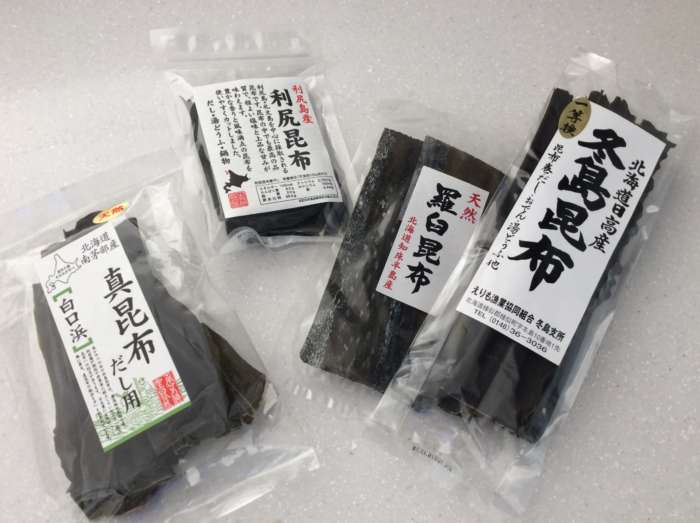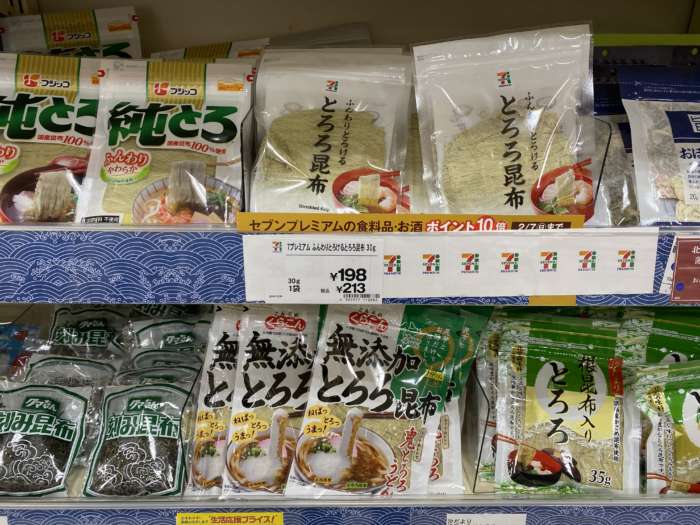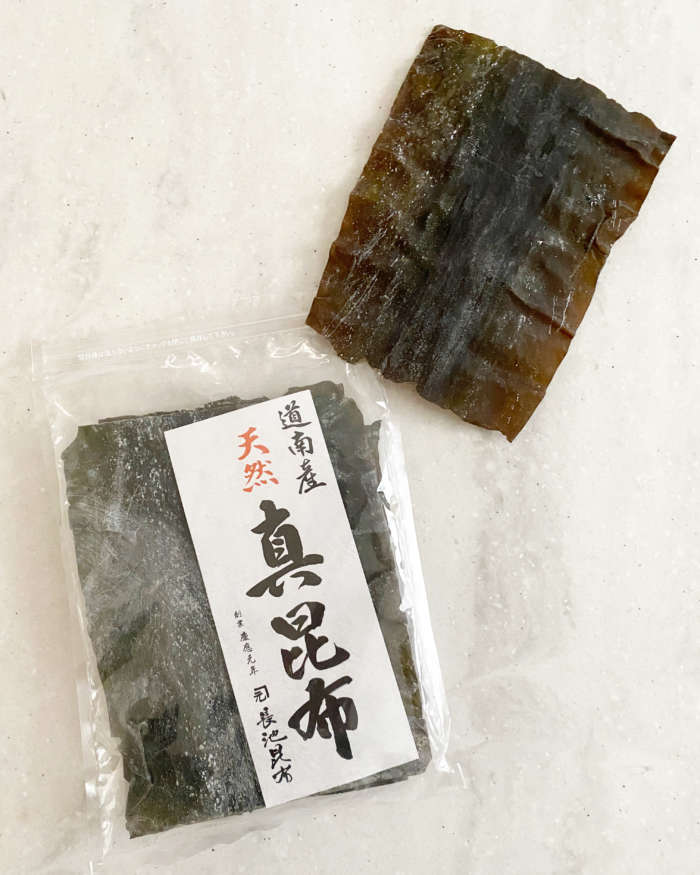Kelp (Kombu)
Kelp (Kombu 昆布) is the king of sea vegetables. It is an essential component in Dashi, the broth used in many Japanese dishes. A natural source for glutamic acid, it is rich in umami. Kombu thrives in the cool, mineral-rich waters surrounding Hokkaido, Japan’s northernmost island.

The cold, mineral-rich waters surrounding Hokkaido provide 99.5% of the country’s kombu. Most kombu is sold in long strips. But it is also available in shavings (tor0ro or boor) to add to soup or sprinkle over the rice. Kombu can also be wrapped around was fish in a process called kobujime, which changes the fish’s texture and adds umami.
There are more than forty types of child and farmed kombu. The name of a specific variety of kombu often reflects where it was harvested.
These are the five most popular:
Rishiri kombu (利尻昆布) : Harvested near Rishiri Island, this is an aromatic kombu that makes a clear broth, popular with chefs in Kyoto. It is considered a high-quality kombu and is often used in top restaurants.
Rausu Kombu (羅臼昆布) : This thick kombu has a stickiness to it, and a deep. Rich flavor that is slightly sweet. Also a high-quality kombu, it is the kombu that is used to make other shaved kombu products such as tororo and oboro.
Ma Kombu (真昆布) : Thick and rich in umami, slightly sweet, with an elegant flavor, this is also considered a top kombu.
Hidaka Kombu (日高昆布) : From the Hidaka region, this kombu is a popular variety used by busy home cooks because it quickly imparts its flavor when simmered in water. It is also reasonably priced and can be used as an ingredients for fish cake stew (oden), sea vegetables and seafood simmered in soy (Tsukudani) and other kombu dishes.
Naga Komnbu (長昆布) : A very long kombu (more than ten meters long), naga kombu is also used in dishes such as oden and Tsukudani. It is found only in the wild – not farmed- and is reasonably priced.

Some Kombu products (not the Kombu used in dashi) include:
Komochi Kombu : Kombu layered with herring eggs.
Kombu cha : Kombu that has been dried and crushed into a powder; most often used for tea, soup stocks, or for thickening non-oil salad dressings.
Musubi Kombu : Knots of Kombu, often found in fish cake stew. (Oden)
Oboro : Shaved Kombu, used for soups
Tororo : Shaved Kombu, used in soups and wrapped around rice and other items.
Shop at YJC’s store on Amazon:

* Reference of this article : Food Sake Tokyo (The Terroir Guides)









